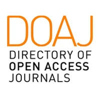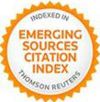Innovation and Tradition: Integrated Practices in the Architectural Survey of Pretorio Palace in Trento 
Abstract
The text and images tell of an architectural experience carried out on perhaps the most representative monument of the city of Trento, the building adjacent to the cathedral and overlooking the square. The role of the scientific method is at the centre of the reflection, which does not change when the procedures vary. On the one hand, it guarantees an informed use of advanced technologies; on the other hand, it is a fundamental training instrument. The importance attributed to ways of operating is, in fact, a discussion on interoperability: between different tools and, above all, between people with various skills. The public use of the large quantities of acquired data and produced information can only be implemented by sharing project choices and building codified archives; in this way, we overcome the dichotomy between survey as the application of pre-established actions and survey as an interpretation triggered by reality.
Keywords
Full Text:
PDFDOI: http://dx.doi.org/10.2423/i22394303v14n1p45
References
Attenni, M., Griffo, M., Inglese, C., & Ippolito, A. (2019). Metodi e modelli per la rappresentazione: il Tempietto di San Pietro in Montorio. Disegnare idee immagini, 59, 82-93.
Bianchini, C. (2014). Survey, modeling, interpretation as multidisciplinary components of a knowledge system. SCIRES-IT - SCIentific RESearch and Information Tecnology, 4(1), 15-24. http://dx.doi.org/10.2423/i22394303v4n1p15
Bianchini, C., & Nicastro, S. (2018). La definizione del Level of Reliability. Un contributo alla trasparenza dei processi di Historic-BIM. DN, 2, 208-255.
Bitelli, G., Gatta, G., Guccini, A., & Zaffagnini, A. (2019). GIS and Geomatics for archive documentation of an architectural project: the case of the big Arc of entrance to the Vittorio Emanuele II Gallery of Milan, by Giuseppe Mengoni (1877). Journal of Cultural Heritage, 38, 204-212. https://dx.doi.org/10.1016/j.culher.2019.01.002
Brumana, R., Banfi, F., Cantini, L., Previtali, M., & Della Torre, S. (2019). HBIM level of letail-geometry-accuracy and survey analysis for architectural preservation. International Archives of the Photogrammetry, Remote Sensing and Spatial Information Sciences, XLII-2/W11, 293-299. https://doi.org/10.5194/isprs-archives-XLII-2-W11-293-2019
Brusaporci, S., Maiezza, P., Marra, A., Tata, A., & Vespasiano, L. (2023). Scan-to-HBIM Reliability. Drones, 7(7), 426. https://doi.org/10.3390/drones7070426
Camagni, F., Colaceci, S., & Russo, M. (2019). Reverse modeling of Cultural Heritage: pipeline and bottlenecks. International Archives of the Photogrammetry, Remote Sensing and Spatial Information Sciences, XLII-2/W9, 197-204. https://doi.org/10.5194/isprs-archives-XLII-2-W9-197-2019
Dallagiacoma, A., Maragno, A., & Massari, G.A. (2019). Projects to save the sites of salvation. World heritage and legacy. Culture - Creativity - Contamination (p. 705-714). Roma, Italy: Gangemi Editore.
Fiorillo, F., Remondino, F., Barba, S., Santoriello, A., De Vita, C., & Casellato, A. (2013). 3D digitization and mapping of heritage monuments and comparison with historical drawings. ISPRS Annals of the Photogrammetry, Remote Sensing and Spatial Information Sciences, II-5/W1, 133-138. https://isprs-annals.copernicus.org/articles/II-5-W1/133/2013/
Grahm, K., Chow, L., & Fai, S. (2018). Level of detail, information and accuracy in building information modelling of existing and heritage buildings. Journal of Cultural Heritage Management and Sustainable Development, 8(4), 495-507. https://doi.org/10.1108/JCHMSD-09-2018-0067
Heidegger, M. (1991). La questione della tecnica. In M. Heidegger, & G. Vattimo (Ed.), Saggi e discorsi (p. 5-27). Milano, Italy: Mursia.
Ippolito, A., Palmadessa, C., Nousrati Kordkandi, M., & Arias Tapiero, J. (2023). The Domus of the Calendar: a qualitative comparison analysis of digital data obtained from 3D laser scanners, SfM methodologies and portable devices. Archeologia e Calcolatori, 34.2, 247-262. https://doi.org/10.19282/ac.34.2.2023.13
Łabędź, P., Skabek, K., Ozimek, P., Rola, D., Ozimek, A., & Ostrowska, K. (2022). Accuracy verification of surface models of architectural objects from the iPad LiDAR in the context of photogrammetry methods. Sensors, 22(21 ), 8504. https://doi.org/10.3390/s22218504
Maiezza, P. (2019). As-built reliability in architectural HBIM modeling. International Archives of the Photogrammetry, Remote Sensing and Spatial Information Sciences, XLII-2/W9, 461-466. https://doi.org/10.5194/isprs-archives-XLII-2-W9-461-2019
Maldonado, T. (2005). Reale e virtuale. Milano, Italy: Feltrinelli.
Masiero, R. (1988). Il vasaio e l'ingegnere: lineamenti per la disciplina del Rilievo. XY Dimensioni del disegno, 6-7, 61-72.
Massari, G.A. (2003). Outline/Interpretation. International Archives of the Photogrammetry, Remote Sensing and Spatial Information Science, XXXIV-5/W12, 225-230.
Massari, G.A., Bonora, M. C., & Svaldi, K. (2010). Spazi medievali scolpiti e dipinti: misura e rappresentazione. Graphic Expression applied to Building International Conference (p. 55-63). Alicante, Spain: Universidad de Alicante.
Massari, G.A., Luce, F., & Pellegatta, C. (2011). Multiscale Interactive Communication: inside and outside Thun Castle. International Archives of Photogrammetry, Remote Sensing and Spatial Information Sciences, XXXVIII-5/W16, 311-318. https://doi.org/10.5194/isprsarchives-XXXVIII-5-W16-311-2011
Massari, G.A., Rolando, A., & Salerno, R. (2005). Metodologia di rilievo multiscala tra architettura e paesaggio: Arco di Trento. In Il rilievo dei beni architettonici per la conservazione (pp. 444-449). Roma, Italy: Edizioni Kappa.
Pellegatta, C., & Luce, F. (2015). Rilevare per la memoria della città: l’esperienza di via del Suffragio a Trento. In A. Marotta (Ed.), Drawing & City. Cultura, Arte, Scienza, Informazione, Atti del XXXVII Convegno internazionale dei Docenti delle Discipline della Rappresentazione, XII Congresso della Unione Italiana del Disegno (p. 763-770). Roma, Italy: Gangemi Editore.
Rafeiro, J., & Tomé, A. (2020). Adapting thet Tool: a historic Building Information Model (HBIM) of Senhora Da Piedade Da Caparica. In P. M. J., A. Aguiar Costa, & L. Sanhudo (Eds.), Ptbim 3º Congresso Português de “Building Information Modelling” (pp. 689-696). Porto, Portugal: U.Porto, Faculdade de Engenharia, Universidade do Porto.
Russo, M., & Manfredini, A. M. (2014). Integration of image and range-based techniques for surveying complex architectures. In F. Remondino, & F. Menna (Eds.), ISPRS Technical Commission V Symposium 2014. II-5, p. 305-312. Riva del Garda: Copernicus GmbH. https://doi.org/10.5194/isprsannals-II-5-305-2014
Santagati, C., Lo Turco, M., & Garozzo, R. (2018). Reverse information modeling for historic artefacts: towards the definition of a level of accuracy for ruined heritage. International Archives of the Photogrammetry, Remote Sensing and Spatial Information Sciences, XLII-2, 1007-1014. https://doi.org/10.5194/isprs-archives-XLII-2-1007-2018
Torsello, B. (1988). La materia del Restauro. Tecniche e teorie analitiche. Venezia, Italy: Marsilio Editori.
Ugo, V. (1994). Fondamenti della rappresentazione architettonica. Bologna, Italy: Esculapio.
Vacca, G. (2023). 3D Survey with Apple LiDAR sensor-Test and assessment for architectural and Cultural Heritage. Heritage, 6(2), 1476-1501. https://doi.org/10.3390/heritage6020080
Voltolini, F., El-Hakim, S., Remondino, F., Girardi, S., Rizzi, A., Pontin, M., & Gonzo, L. (2007). Digital documentation of complex architectures by integration of multiple techniques: the case study of Valer Castle. In J. Beraldin, F. Remondino, & M. Shortis (Eds.), Videometrics IX. 6491. SPIE Digital Library. https://doi.org/10.1117/12.702727
Article Metrics
Metrics powered by PLOS ALM
Refbacks
- There are currently no refbacks.
Copyright (c) 2024 Ambra Barbini, Francesco Giampiccolo, Anna Maragno, Giovanna A. Massari, Cristina Pellegatta

This work is licensed under a Creative Commons Attribution-NonCommercial-NoDerivatives 4.0 International License.
SCIRES-IT, e-ISSN 2239-4303
Journal founded by Virginia Valzano




